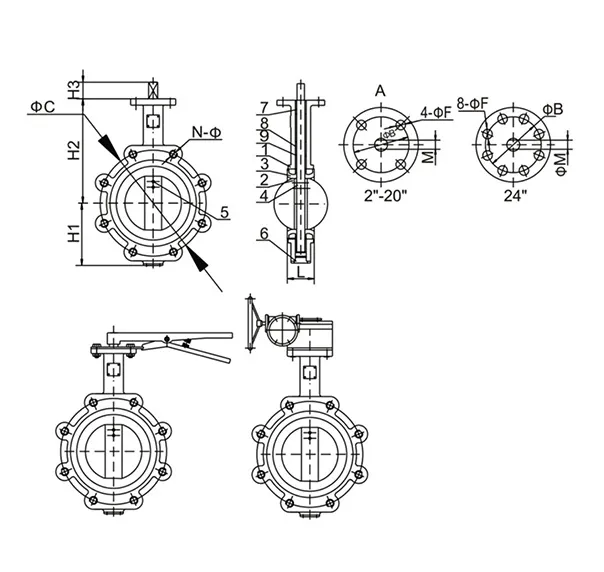Nov . 20, 2024 19:01 Back to list
actuated ball valve
Understanding Actuated Ball Valves Key Features and Applications
Actuated ball valves are essential components in a variety of industrial applications, offering precise flow control and durability in demanding environments. These valves combine the reliability of a traditional ball valve with the automation provided by an actuator, which allows for remote operation and enhanced process efficiency.
What is an Actuated Ball Valve?
An actuated ball valve consists of a spherical closure element (the ball) that can be rotated to control the flow of fluid. The term actuated refers to the mechanism, usually an electric, pneumatic, or hydraulic actuator, that operates the valve automatically. This integration allows for quick response times and can be easily integrated into automated control systems.
Key Features
1. Design and Functionality The ball within an actuated ball valve has a hole or port through its diameter. When the valve is in the open position, the flow is unrestricted, allowing fluids to pass through easily. Conversely, rotating the ball a quarter turn closes the valve, effectively stopping the flow. This simple yet effective design makes ball valves highly reliable and minimizes wear.
2. Types of Actuators The actuator type is crucial in determining how the ball valve operates. Electric actuators are commonly used for their ease of integration with electronic control systems and for applications requiring moderate torque. Pneumatic actuators, on the other hand, are typically faster and suitable for environments that demand quick response times. Hydraulic actuators can provide high force for larger valves or operations involving heavier fluids.
3. Fail-Safe Options Many actuated ball valves come equipped with fail-safe features, ensuring that in the event of a power failure or system malfunction, the valve will revert to a predetermined position (usually closed). This safety measure is essential in preventing accidents and maintaining operational integrity.
actuated ball valve

4. Minimal Pressure Drop One of the significant advantages of ball valves is their ability to maintain a low-pressure drop across the valve when fully open. This characteristic is especially beneficial in systems needing efficient fluid dynamics and minimized energy loss.
5. Material Selection Actuated ball valves are typically constructed from various materials, including stainless steel, carbon steel, and plastic, depending on the application. The choice of material impacts the valve's resistance to corrosion, temperature, and pressure conditions, making it vital to select the right type for specific environments.
Applications
Actuated ball valves are widely used across numerous industries, including
- Oil and Gas Due to their reliability and ability to handle high flow rates, these valves are commonly found in pipeline operations and refineries. - Chemical Processing The ability to control aggressive fluids makes actuated ball valves ideal for chemical applications where safety and precision are paramount. - Water Treatment In wastewater and drinking water facilities, these valves help manage flow and ensure proper treatment processes. - Food and Beverage Ensuring hygiene is critical in this sector; thus, valves made from food-grade materials are widely implemented for fluid transfer.
Conclusion
In conclusion, actuated ball valves are indispensable components in modern industrial systems. By incorporating automation into the reliable design of traditional ball valves, these systems provide efficient and safe fluid control. Their versatility across various applications makes them a key player in enhancing system performance and operational efficiencies. As industries continue to evolve, the demand for actuated ball valves will likely increase, prompting further innovations in their design and functionality.
Share
-
Reliable Wafer Type Butterfly Valves for Every IndustryNewsJul.25,2025
-
Reliable Flow Control Begins with the Right Ball Check ValveNewsJul.25,2025
-
Precision Flow Control Starts with Quality ValvesNewsJul.25,2025
-
Industrial Flow Control ReliabilityNewsJul.25,2025
-
Engineered for Efficiency Gate Valves That Power Industrial PerformanceNewsJul.25,2025
-
Empowering Infrastructure Through Quality ManufacturingNewsJul.25,2025